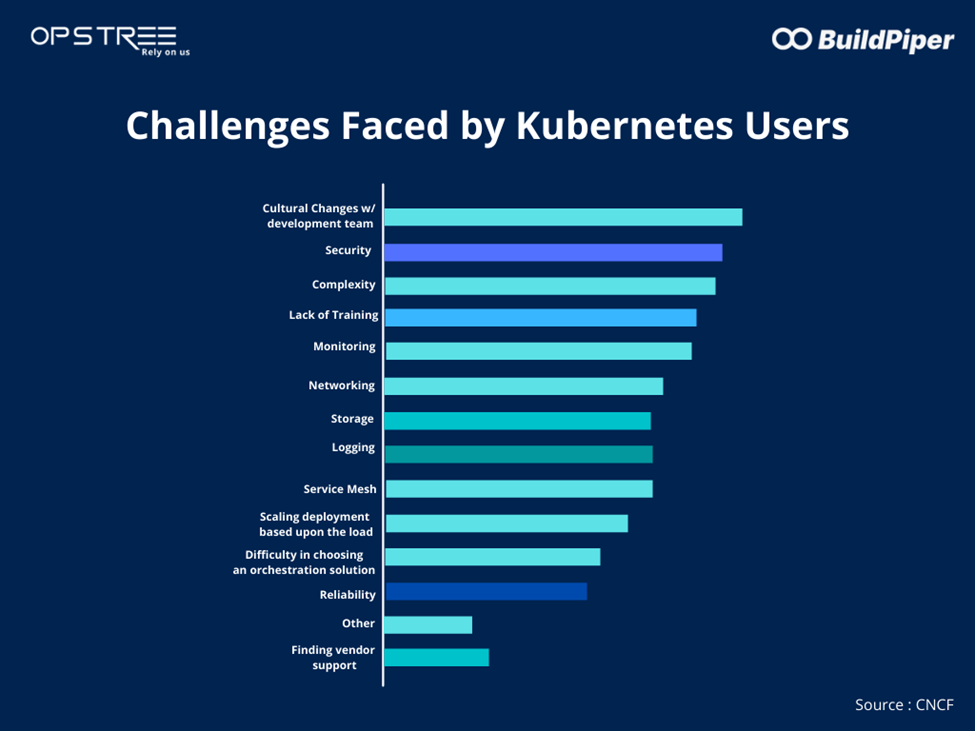The modernization of the software world is all about providing flexibility, efficiency, and increased productivity. With every new technology, new web frameworks, tools & techniques, etc., we are intrigued by the potential benefits it promises. So, in this blog, we will be discussing the newfound love of the modern-day developers- Kubernetes.
But before we dive deeper into the What is Kubernetes? and the various benefits it offers, let’s first know- why do we need Kubernetes?
The expansion of virtual services and their scaling have prompted the evolution of virtual machines to the use of containers for deploying microservices.
What are Containers?
The encapsulation of a software code and all its related files, such as it gets converted into one single unit, where it can run independently in any environment – Cloud or OS. Containers isolate the packaged unit of code from the environment, ensuring its smooth functioning, despite the differences of different computing environments.
Dealing with just one or two containers does not require an orchestration platform as complex as Kubernetes. However, building a solution using containers at scale is where you need the help of Kubernetes.
So there might be a situation where we use nearly 100, or even more containers, spread across multiple environments, but all of them need to be managed for any bug fixes or scaling. Even though the container runtime APIs manage the individual containers, but they are insufficient when it comes to managing 100+ containers.
This is where we need a container orchestration platform. It connects them to the outside world in setting tasks like scheduling, load balancing, and distribution. Kubernetes is the most popular, which is quite evident from this report.
How does Kubernetes Help?
Kubernetes help in framing deployment patterns, scheduling the containers in a cluster, such as if one container fails, another container takes its place and functions without hampering the working.
Below there are some features which help in its working:
- Load Balancing
It exposes the container using its DNS name or its IP address. If a container receives high traffic, it tries to distribute the network traffic to other related containers, thereby stabilizing the deployments.
- Storage Orchestration
With Kubernetes, we can automatically choose a storage location of our choice like local storage, public cloud providers, etc.
- Automated rollouts and rollbacks
We can change the actual state of the container according to our own specifics. We can even feed this information, and automate it, which means Kubernetes can create new containers as per our description and remove the existing ones, shifting all the resources from the existing ones to the new ones.
- Automatic bin packing
To ensure efficient usage of resources, we can customize the usage of CPU and RAM, and can even assign the number of nodes.
- Self-healing
If any container doesn’t respond, it restarts them or replaces them.
If any container doesn’t pass the health checks, it immediately deletes them. And it doesn’t advertise any updates to the clients before it is published.
- Secret and configuration management
Kubernetes does allow storing of secrets like passwords, OAuth tokens, and SSH keys. This sensitive information can be stored, deployed and developed, without having to rebuild container images. Furthermore, it takes care of not letting them be exposed in the stack configuration.
The Challenges Faced While Using Kubernetes
- Overdependency on Experts
The developers being unfamiliar with the knowledge and expertise on Kubernetes infrastructure, find it difficult to deal with any issues that might incur. They have to depend on the DevOps team in creating K8S objects like Deployments, Replicasets, StatefulSets, and DaemonSets.
- Security Challenges
It does not enforce any policies. To bring in some regulations to find vulnerabilities, we need to enter the policies/scripts manually. For seamless operation, Kubernetes pods can communicate with each other and to external points as well. But if one pod is breached, all others get infected too.
- Post-deployment health checks
The main purpose of deploying Kubernetes is to scale to larger user bases on demand- which could be unpredictable or a gradual increase. To introduce new updates to the live audiences, a better approach would be through gradual deployment. But, given the distributed nature of containerized applications, the process gets tougher and quite cumbersome, to monitor the health of the newly deployed Kubernetes apps and to report the organization about any possible vulnerabilities.

Conclusion Kubernetes is a boon for digital modernization. It’s a time where updates are rolled out more frequently than ever, the scalability of your services goes up and down any time & in a nutshell, we can say it’s a highly dynamic environment that the tech industry is in now. There is nothing more apt than Kubernetes for such an environment. That being said so, we should also say it’s never that easy to manage Kubernetes but for that also humans found a solution called k8s orchestration platforms which will deliver you a seamless Kubernetes experience. Problem Fixe

